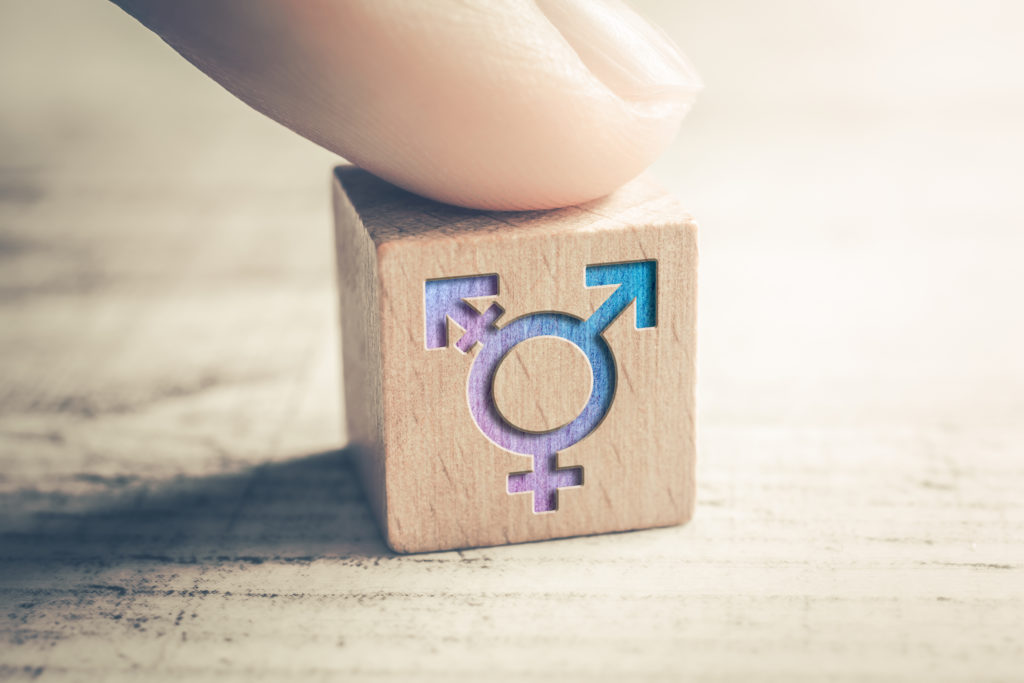- People
- Expertise
Our expertise
We are a team of more than 500 professionals, with the depth of experience which makes us genuine experts in our fields. Together, gunnercooke’s people have strength across just about every corporate discipline and sector. We provide legal, commercial and strategic advice that delivers real value to the clients we work with, which span from multinational enterprises through to unicorns and non-for-profit organisations. Our breadth of expertise covers some of the most interesting and important emerging disciplines, from ESG and charity law, to blockchain and competition.
Search by practice areaDispute ResolutionDispute Resolution OverviewMeet the Dispute Resolution TeamIntellectual Property DisputesFinancial Services & FinTech OverviewProceeds of CrimeEmployment TribunalTax InvestigationProperty Dispute ResolutionInsolvency DisputesMediationCivil Fraud & Asset TracingHealth & SafetyBusiness Crime & InvestigationsLitigation & ArbitrationInternational Arbitration - International
International Offices
The gunnercooke group has 15 main global offices across England, Scotland, the US, Germany and Austria, with further plans for growth in the coming years. These offices enhance the existing in-house capability of our dedicated international teams and dual-qualified experts that cover Spain, France, Italy, Portugal, Brazil, China, India, Poland and Hungary. Our team have clients across 123 jurisdictions, speak 46 languages and are dual-qualified in 21 jurisdictions. Our expertise means we can offer large teams to carry out complex cross-border matters for major international clients.
- Our story
Our story
gunnercooke is the fastest growing corporate law firm in the UK, now making its mark globally. We comprise a rapidly growing number of experts spanning legal and other disciplines. Clients benefit from flexible options on fees to suit their needs, access to a wider network of senior experts throughout the relationship, and legal advice which is complemented by an understanding of the commercial aspects of running a business.
- Reading Room
- News & Insights

Transgender rights, gender critical beliefs & free speech: what are the latest legal developments and how should these be managed in the workplace?
Employment Partners, Simon Brian and Joan Pettingill, report on some important recent case law developments in relation to gender critical beliefs and transgender rights and provide some guidance on how to manage these issues in the workplace.
- Forstater v CGD Europe & Others UKEAT/0105/20
The key question that went before the Employment Appeal Tribunal (EAT) in this case was whether a gender critical belief was a philosophical belief qualifying for protection under the Equality Act 2010. At the core of the case were Ms Forstater’s views on transgender individuals, which included a belief that a person’s biological sex at birth is immutable and cannot be changed and that this should not be conflated with gender identity, which she says is something different.
Religion or belief is a protected characteristic under section 4 of the Equality Act 2010 and section 10 of that Act defines ‘belief’ as any religious or philosophical belief. Importantly in this case, any reference to a ‘belief’ includes a lack of belief (or a non-belief).
Ms Forstater held a belief that a person’s sex is a material reality that shouldn’t be conflated with gender or gender identity. She believes that being female is an immutable biological fact and not a ‘feeling’ or an ‘identity’ and that a trans woman is not in reality, a woman. She believes that while a person can identify as another sex and can ask other people to go along with that and that a person can physically change their sex under the Gender Recognition Act 2004, this doesn’t change their actual biological sex.
Ms Forstater engaged actively on social media about these views. In so doing, she made some remarks which some trans people found offensive. Some of her colleagues complained that they found her comments offensive and following an investigation it was decided that her post should not be renewed on expiry. She was a visiting fellow engaged on a consultancy arrangement with CGD Europe, which was the European arm of a not for profit “think tank” based in America.
Ms Forstater presented claims to the Employment Tribunal (ET), including a claim that her gender critical beliefs constituted a protected philosophical belief under section 10 of the Equality Act 2010. She said that the non-renewal of her contract amounted to discrimination.
At a Preliminary Hearing, the ET held that Ms Forstater’s beliefs didn’t amount to a philosophical belief qualifying for protection. They relied on a previous decision of the EAT in Grainger plc & Others v Nicholson 2010 IRLR 4 (EAT). In the case of Grainger the EAT set out some guidance as the types of belief that should be protected under the Act. They set out 5 criteria (now known as the Grainger criteria):-
- The belief must be genuinely held;
- It must be a belief, not an opinion or viewpoint based upon information presently available;
- It must be a belief as to a weighty and substantial aspect of human life and behaviour;
- It must attain a certain level of cogency, seriousness, cohesion, and importance; and
- It must be worthy of respect in a democratic society, not be incompatible with human dignity and not conflict with the fundamental rights of others.
The ET said that Ms Forstater’s belief didn’t satisfy the 5th criterion in Grainger. They accepted that it satisfied all of the other criteria. They said that people cannot expect their belief to be protected if their core belief involves violating other people’s dignity and / or if it creates an intimidating, hostile, degrading, humiliating or offensive environment for them. They commented that Ms Forstater’s belief (or aspects of it) were not supported by scientific evidence. They said that her view was ‘absolutist’ in nature and incompatible with human dignity and the fundamental rights of others.
Ms Forstater appealed to the EAT and her appeal was upheld. They said that her belief was a protected philosophical belief. They said that freedom of expression is one of the essential foundations of a democratic society. They said that it is a paramount principle that it isn’t really for the courts to inquire into the validity of a belief. Notably, they said that a belief only needs to satisfy a very modest threshold in order to be protected.
The EAT considered how Ms Forstater’s belief had manifested itself (i.e. in respect of her social media postings) and said that, whilst this is relevant, it shouldn’t be the key focus. The EAT scrutinised the Grainger criterion relating to whether Ms Forstater’s belief was worthy of respect in a democratic society and they said that it was. Although Ms Forstater’s belief may be objectionable and / or offensive to some, it should still be protected, and they drew comparisons with ‘hate speech’ saying that only the gravest forms of hate speech (e.g. totalitarianism or advocating Naziism) wouldn’t qualify for protection.
The EAT directed that the case should be referred back to the ET to be fully heard on the basis that Ms Forstater’s belief qualified for protection under the Equality Act.
The ET decision has now been handed down and it has upheld Ms Forstater’s complaints of direct discrimination because of her belief, in relation to the non-renewal of her visiting fellowship and the decision not to offer her a contract of employment. Ms Forstater’s complaints of victimization, due to her belief, have also been upheld in relation to the removal of her profile from the company’s website.
Interestingly, the outcome of the Forstater case can be compared and contrasted with the outcome in another recent case heard in the EAT – Mackereth v DWP – concerning an employee’s beliefs about sex and gender.
- Mackereth v the Department for Work and Pensions & Another UKEAT/2022/99
Here, again, the EAT has held that a Christian doctor’s belief that a person cannot change their biological sex / gender and his lack of belief in ‘transgenderism’ are protected under the Equality Act 2010. However, the EAT found in this case that the Employment Tribunal had been entitled to find that Dr Mackereth had not been discriminated against as a result of his treatment by the DWP when he had refused to use transgender service users’ preferred pronouns.
Dr Mackereth worked as a health and disabilities assessor of benefits. During his induction training, he had explained that his beliefs were such that he wouldn’t agree to use the preferred pronouns of transgender service users, as required by the DWP’s policies when conducting face to face assessments with claimants. When considering whether it could accommodate Dr Mackereth’s beliefs, the DWP decided that it was unable to offer him a non-customer-facing role because this required at least 12 months’ experience. It also concluded that it would not be possible to ensure that he only assessed non-transgender service users, since claimants may not present as transgender until the assessment.
When Dr Mackereth left his employment he brought discrimination claims in the Employment Tribunal relying upon the protected characteristic of religion or belief. He asserted a biblical belief that people are created either male or female and cannot change their sex/gender at will, as well as a belief that it would be irresponsible and dishonest for a health professional to accommodate and/or encourage a patient’s ‘impersonation’ of the opposite sex. He also asserted a lack of belief in ‘transgenderism.’
The tribunal dismissed his claims, finding that his beliefs didn’t satisfy one or more of the Grainger criteria – including that the belief must be worthy of respect in a democratic society and not conflict with the fundamental rights of others.
The Tribunal found that the DWP had adopted provisions, criteria and practices (PCP’s) that required assessors to use service users’ preferred pronouns and to confirm a willingness to adhere to this. It accepted therefore that group disadvantage to Christians had been made out, as well as individual disadvantage to Dr Mackereth. However, it concluded that the PCPs were necessary and a proportionate means of achieving the DWP’s legitimate aims – i.e. to ensure transgender service users were treated with respect and in accordance with their rights under the Equality Act, and to provide a service that promoted equal opportunities.
Dr Mackereth appealed to the EAT, where it was found that the ET had made a number of errors in its approach to the Grainger criteria. Notably, it had imposed too high a threshold in relation to the 5th criterion (i.e. that a belief must be worthy of respect in a democratic society, not be incompatible with human dignity and not conflict with the fundamental rights of others). They upheld the view that in a pluralist democratic society it is necessary for the threshold to be set at a low level, so as to allow for protection, not just of beliefs held to be acceptable by the majority, but also of minority beliefs, even where those beliefs might offend others. The EAT cited with approval the statement in Forstater that in order for a belief to qualify for protection, it need only be established that it doesn’t have the effect of destroying the rights of others.
The fact that Dr Mackereth’s beliefs were likely to cause offence didn’t warrant their exclusion from protection. As for his lack of belief in ‘transgenderism’, it was clear from Forstater that lack of belief is protected under the Equality Act, irrespective of the Grainger criteria.
Having held that Dr Mackereth’s biblical belief and lack of belief in transgenderism were protected, the EAT nevertheless upheld the ET’s findings that he had not suffered direct discrimination, indirect discrimination or harassment as a result. In its view, the ET had permissibly found that the alleged acts of less favourable treatment/harassment had not been made out. Dr Mackereth had not been put under pressure to renounce his beliefs but merely to clarify his position. Furthermore, the DWP had not made a final decision to dismiss him and had still been at the information-gathering stage when Dr Mackereth had decided to leave. The ET had also permissibly found that his beliefs were not the reason for DWP’s conduct. Rather, the reason was that it wanted to treat service users in the manner of their choosing. The EAT said that the ET had also been entitled to draw a distinction between his beliefs and the way he wished to manifest those beliefs, finding that any assessor not prepared to address service users in the manner of their choosing would have been treated the same way, regardless of whether they shared the same belief. In addition, the ET was also satisfied that the relevant conduct had neither the purpose nor effect required to amount to harassment.
Notably, Dr Mackereth had accepted that his particular beliefs were not shared by all Christians. He had not challenged the legitimate aims established by the DWP. In deciding that the PCPs were necessary and a proportionate means of achieving those aims, the ET had undertaken a detailed assessment of the relevant context. It was entitled to find that there were particular sensitivities arising from the face-to-face interactions that Dr Mackereth would have had with service users.
The ET did not lose sight of the potential impact of the PCP’s on Dr Mackereth but was entitled to keep in mind the limited nature of the intrusion (no penalty having been applied by the DWP, which was still seeking to accommodate Dr Mackereth). The EAT therefore dismissed Dr Mackereth’s appeal against the ET’s findings on direct discrimination, harassment and indirect discrimination.
Summary
These cases are particularly interesting, given their similarities, but noting the different outcomes. They demonstrate the need for the EAT to effectively balance and, where possible, to try to reconcile interests and rights which are effectively in competition. The cases are very sensitive and fact specific but they tend to show that beliefs will be protected, even where they are particularly unpalatable and offensive to others, provided they don’t unduly impact, to a sufficiently significant degree, the rights and fundamental freedoms and protections of others.
Employers will perhaps appreciate the relatively low threshold for a belief to qualify for protection and will need to have this in mind when considering these types of issues in the workplace. A particular issue to perhaps consider, on a case by case basis, is the way in which beliefs manifest themselves.
In practice
What does all this mean in practice? And what might HR professionals have in mind when supporting managers who may have to address these freedom of speech issues with their teams? When does freedom of speech become unlawful in the employment context?
Staff, whether the employers themselves, leaders, owners and staff by definition come to work bringing with them their lived individual experiences, diversity and many different perspectives. Freedom of speech and freedom of expression bring challenges in the workplace as they do in many aspects of life.
Organisations and individuals alike may have quite particular values they espouse. Too much harmony may result in blandness, a lack of creativity and not enough challenge. At the other end of the spectrum, badly handled confrontation about differing beliefs can lead to downtime, unnecessary costs, legal claims, overly high staff turnover, loss of skills and experience from an organization, disengagement and unsatisfactory performance, ill health, disrupted career paths, negative publicity and unhappy family lives.
We are all familiar with the phrases “cancel culture” and “no platforming” where individuals might be ostracized for not holding views acceptable to those hosting events or debates.
The challenge for employers is what stance to take when differing opinions or strongly held beliefs come to the fore. How might HR handle this?
- Firstly, don’t ignore conflicts of beliefs in the workplace. Be aware that the right of freedom of speech extends to other freedoms relating to the employer/employee relationship such as freedom of association, freedom of political belief or freedom to join a trade union for example. Freedom of belief is part of a wider package of freedoms.
- Recognise that whilst freedom of belief may be a protected characteristic under equality laws, it is not totally unlimited freedom. Although the cases discussed above provide for a high threshold before a belief falls outside the bounds of what is potentially a legally protected belief, free speech is not a cast iron employment right.
- Be mindful that manifestations of beliefs may give rise to a potentially fair reason for dismissal if they fall into the category of misconduct. For example, hate speech towards a colleague or customer or the articulation of a belief in such a way as to incite violence could potentially be criminal conduct not just conduct classified as misconduct or gross misconduct in a disciplinary policy or handbook.
- Consider also what the individual’s role is. Does what the individual says, fall foul of contractual confidentiality rules, breach the employer’s security or data protection rules in some way or impact upon the reputation of the organization or their colleagues? Might a genuine occupational requirement to hold a particular belief be relevant?
- Don’t let conflict about beliefs, or the articulation of beliefs fester to cause ongoing conflict between colleagues. Left unchecked, conflict situations about potentially protectable beliefs may become worse or crop up again at an inopportune time when attentions need to be focused on work. Would workplace mediation help?
- Ideally, foster a workplace culture where individuals are free to lawfully express their views in safety and feel that the workplace is a safe, respectful space in which they can do that ensuring that policies set out clearly what is or isn’t acceptable. Are managers and colleagues trusted to respect beliefs and not joke about or belittle them?
- Acknowledge everyone’s views whether you agree with them or not.
- Be aware that all parties involved are likely to consider that their belief is “right”. Additionally, an individual may consider that their manifestation of their belief is done in the right way.
- Consider what the least discriminatory way of proceeding with the conflict situation might be as the DWP did. What if any steps might be taken to accommodate all relevant beliefs? Ask yourself, what is the most accommodating, least discriminatory way of resolving the conflict.
- If there’s a conflict between an individual’s belief and a workplace policy, step back and consider what the organization’s legitimate aims really are.
- Disregarding the reason for the belief of the individual which might lie behind their action, would the conduct trigger a disciplinary process if it had been done by a different staff member?
- Don’t necessarily try to dissuade individuals from their beliefs.
- Remember that it is easy for beliefs to be protected and there is a wide margin of beliefs that may be protectable and also that not holding a particular belief is also protectable. Only the gravest forms of articulation or incitement of hatred are unlikely to be protectable beliefs.
- Before taking action, think carefully; does the articulation of this individuals’ beliefs genuinely infringe the actual rights of another staff member?
- Freedom of speech and belief does not automatically prevent speech which other people may find offensive, or which may cause upset.
- There is a careful balance however to be had when beliefs turn into words or actions which might constitute harassment under the Equality Act 2010 being unwanted conduct related to a protected characteristic having either the purpose or effect of violating the dignity of another or creating an intimidating, hostile, degrading, humiliating or offensive environment.
What remains clear is that as situations in the workplace crop up, they will require extra careful handling and examination of each scenario on its own facts in order to find a way through. This looks set to be a developing and interesting area of discrimination law.
| Discrimination laws can be complex and sometimes difficult to navigate. For expert advice and support on discrimination issues, Simon Brian can be contacted at [email protected] or on 07979 682752 and Joan Pettingill can be contacted on [email protected] or on 07398 334777. |








